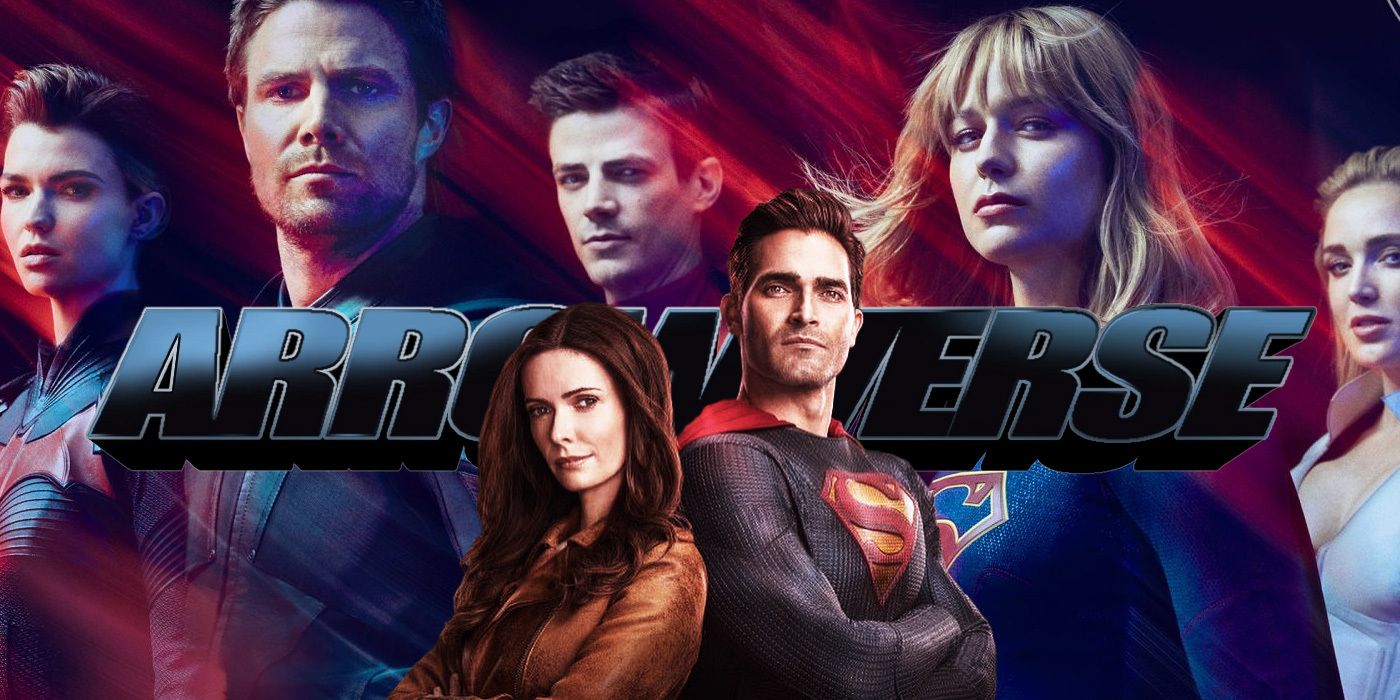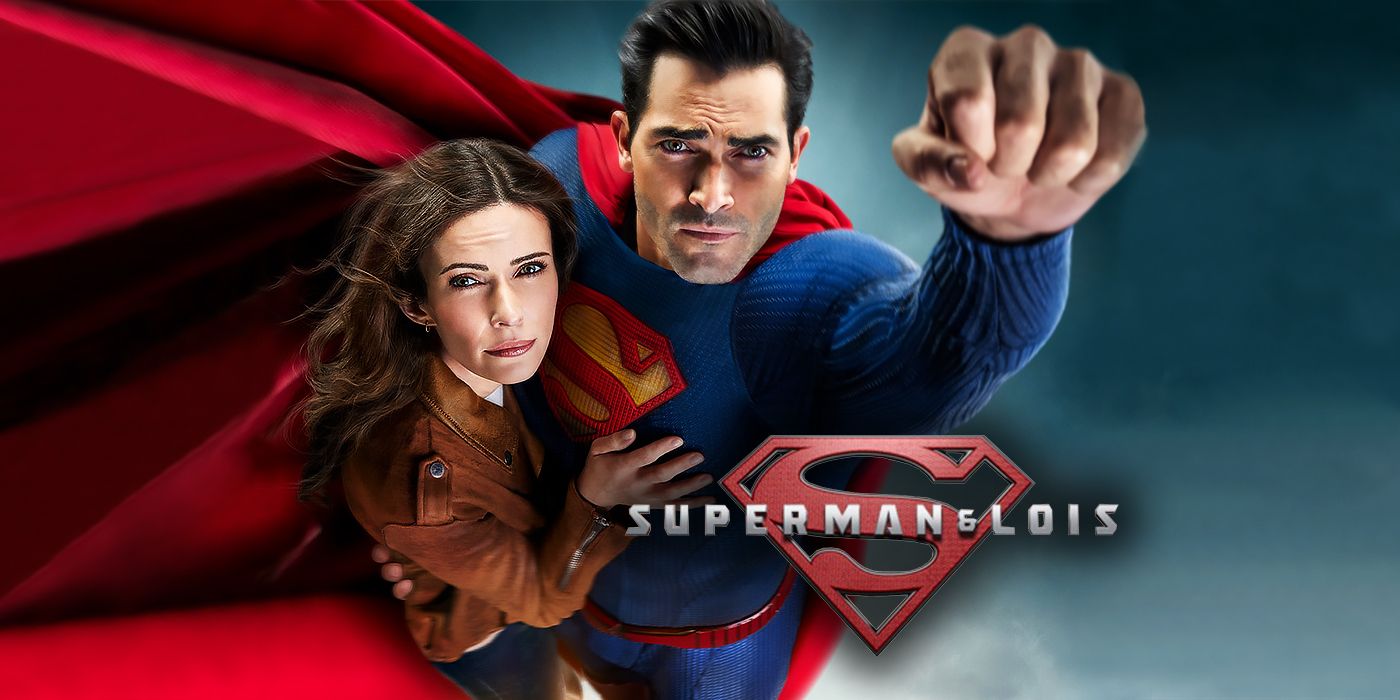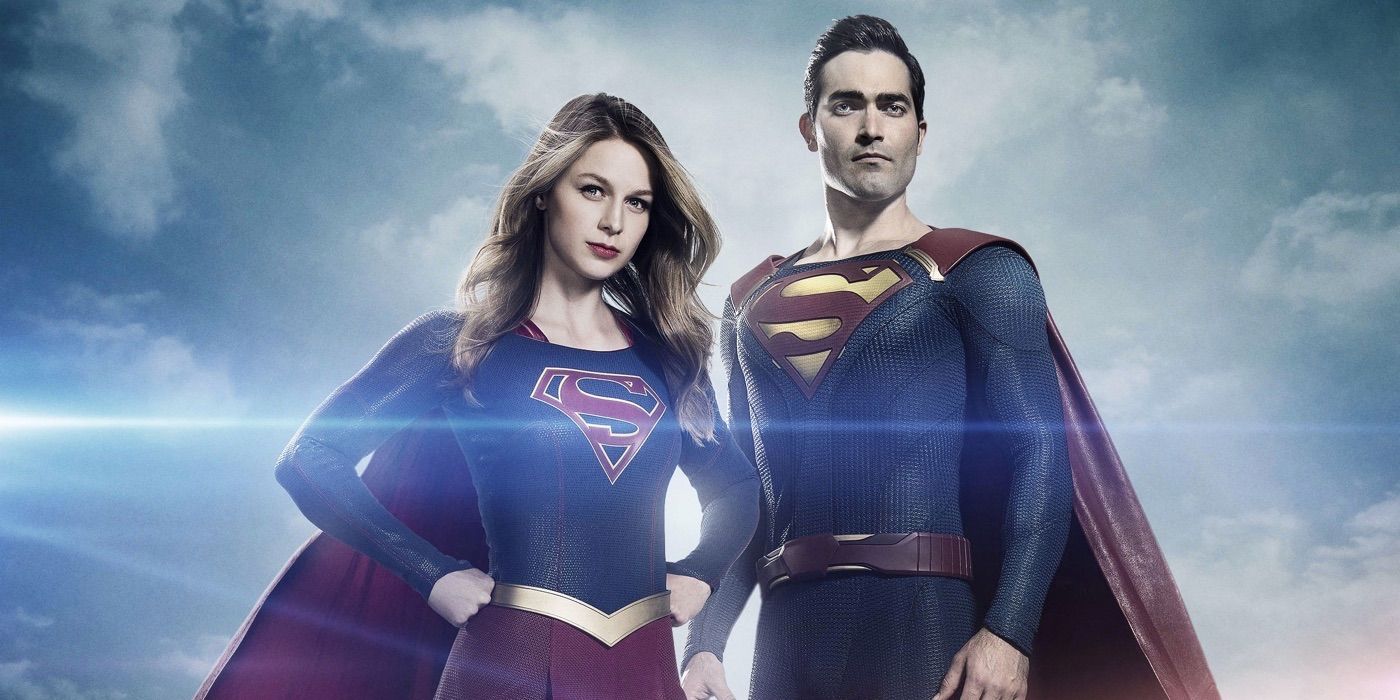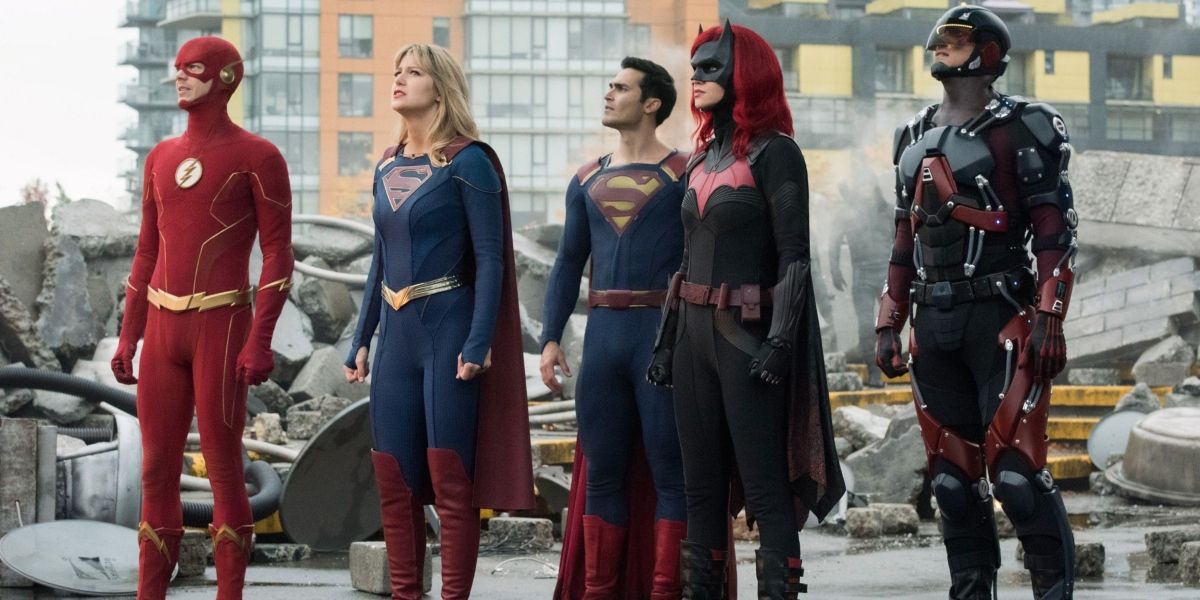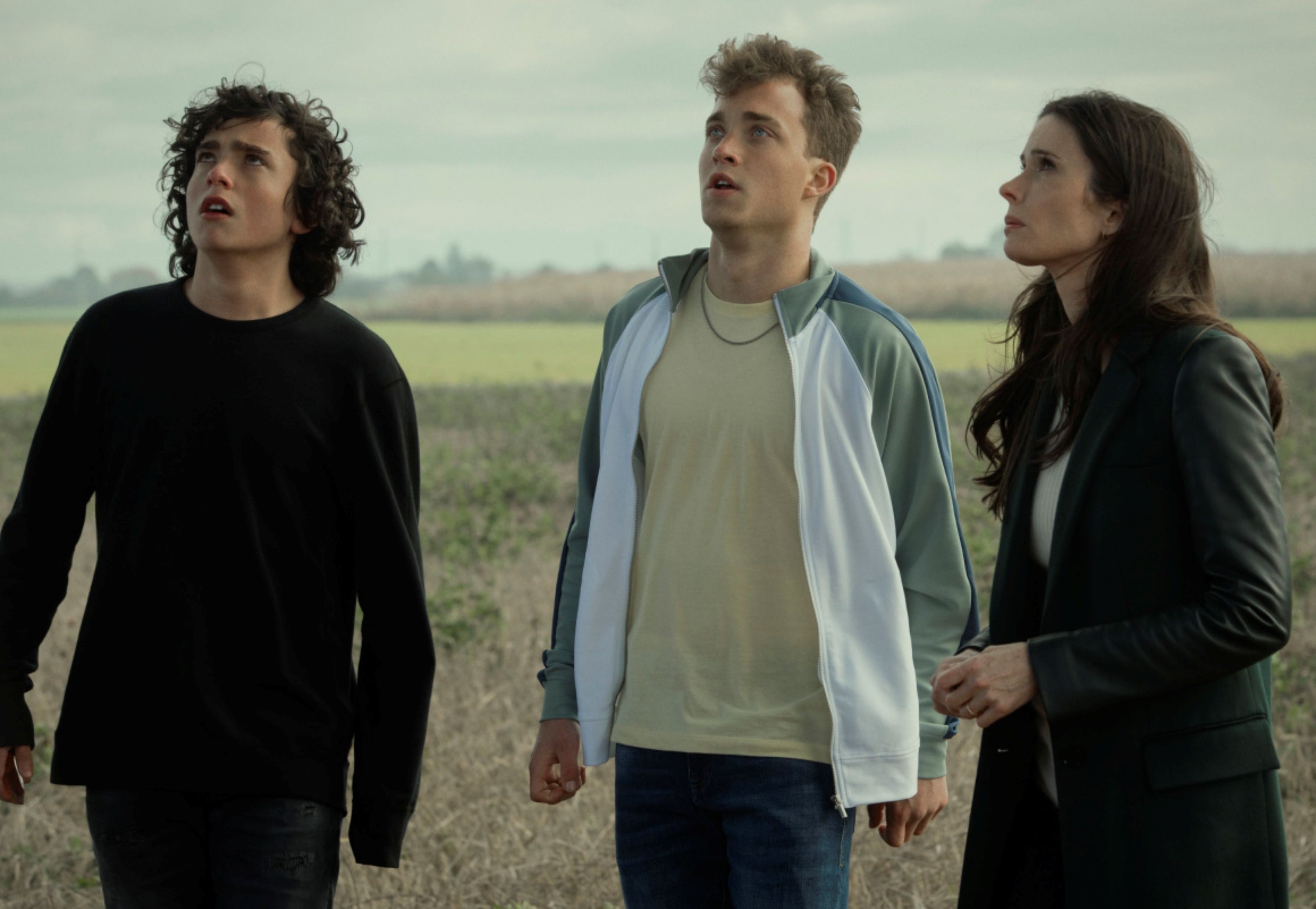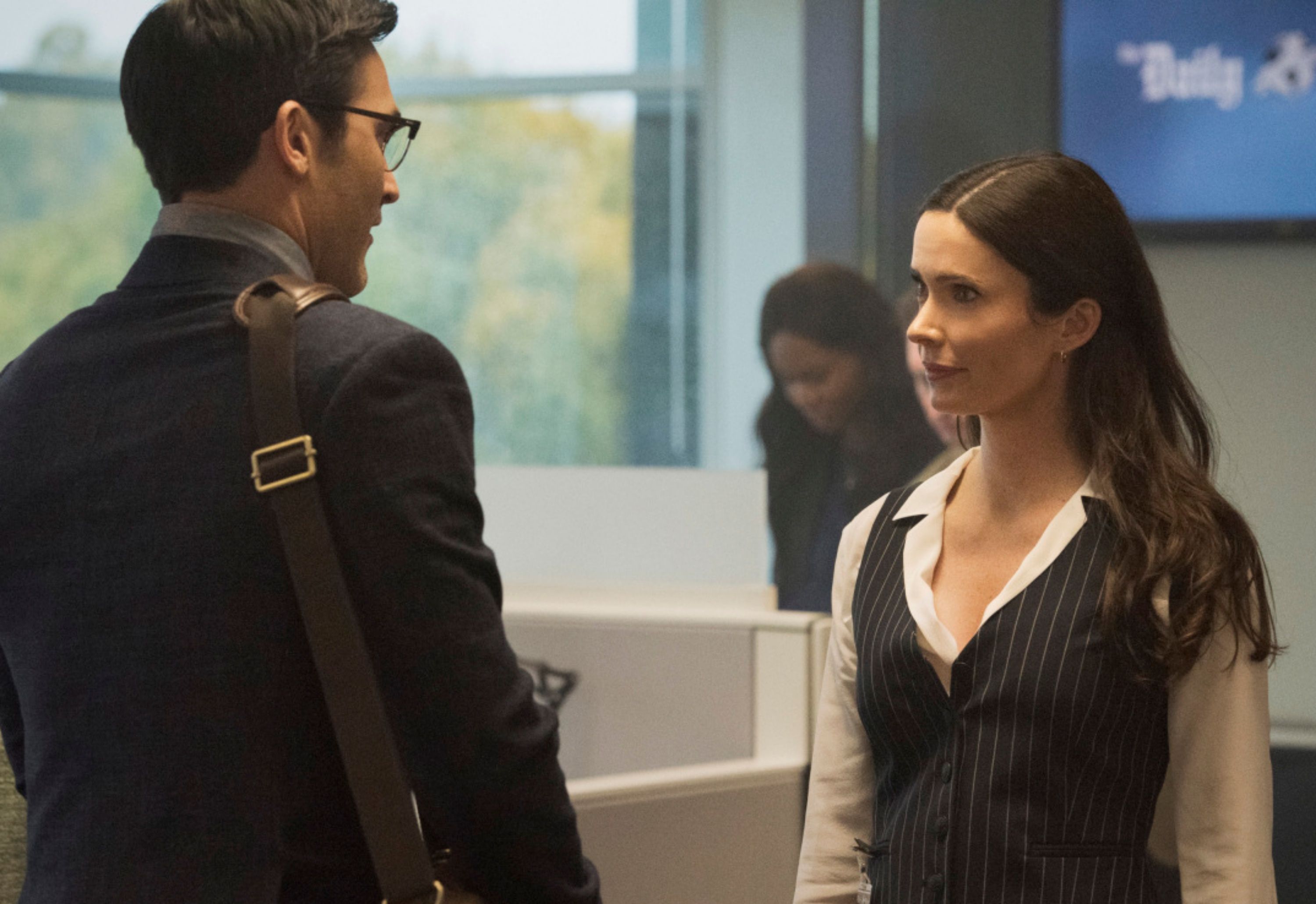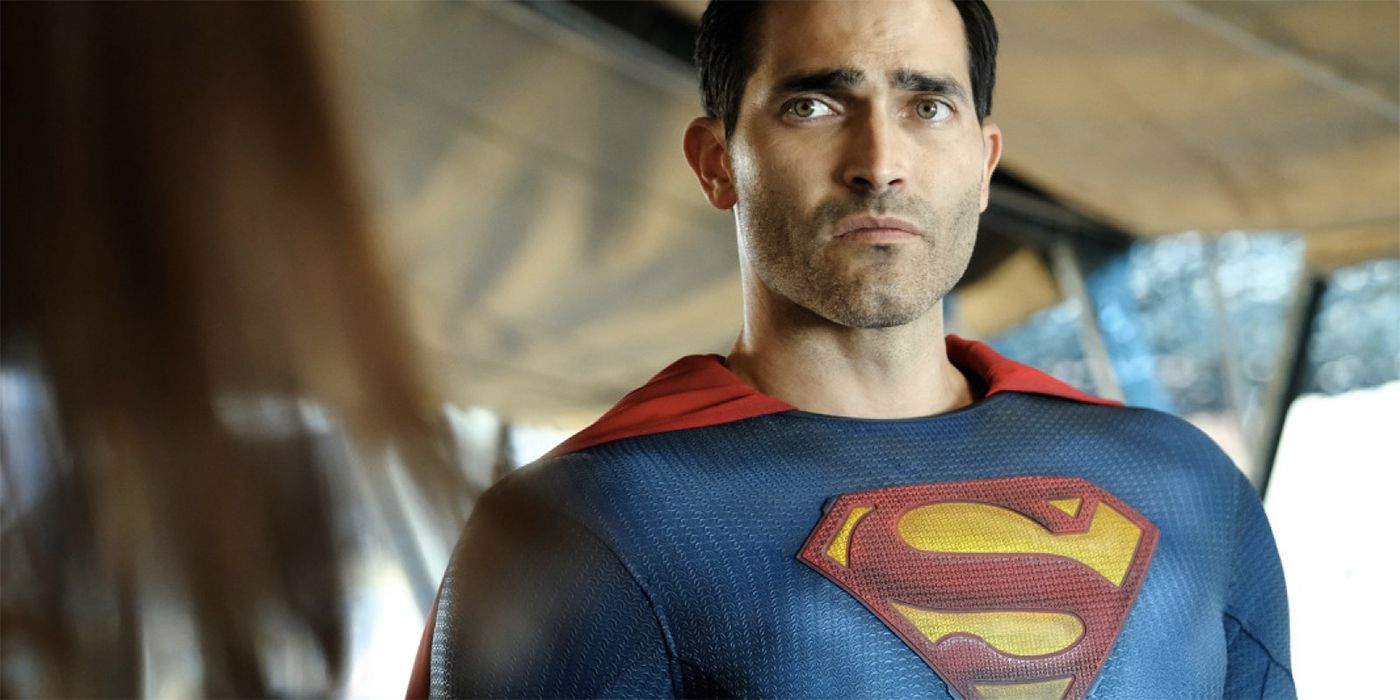It's no secret that Superman & Lois looks significantly better than the rest of the Arrowverse shows. Watching a clip of Superman saving a drowning submarine versus the Flash Family fighting against Godspeed is like watching the 2017 Power Rangers film and then going back to an old episode of the original series. The quality of Superman & Lois is a clear indicator that the former series holds itself to a higher, more cinematic standard than its other CW siblings. While Superman & Lois works hard to chase the cinematic visuals of feature films and their high-budget streaming counterparts (and usually succeeds), the "look" of the show isn't the only thing that makes this Superman series stand apart.
It's hard to call Superman & Lois a spin-off of Supergirl, though both Tyler Hoechlin and Elizabeth Tulloch first appeared on the series as Clark Kent/Superman and Lois Lane before jumping over to their own show. This new super-series is so different thematically, visually, and constantly disregards the Supergirl continuity in favor of its own, making it sometimes hard to sort out the Superman & Lois timeline in relation to the greater Arrowverse.
But make no mistake, this isn't a bad thing, nor does Superman & Lois actively take jabs at Supergirl or their sister shows, it simply ignores what doesn't work for the series by putting its own characters and story first. This is just good practice for any television series, especially those that exist within the same world as others, such as Chicago Fire and Law & Order: SVU or the paranormal Sleepy Hollow and much more grounded Bones (which, believe-it-or-not, crossed over back in the day).
The primary way Superman & Lois ignores events from Supergirl is by completely re-characterizing, recasting, and rewriting the histories of its main characters for a new audience. While many of the changes made to character histories and personalities can be explained as the lingering effects of the "Crisis on Infinite Earths" crossover (which rewrote the entire Arrowverse), some changes are still worth noting. For example, Morgan Edge first appeared as a recurring villain on Supergirl, played by Adrian Pasdar, and was a human businessman in National City bent on dominating the real estate market and killing his competition.
Yet, on Superman & Lois, he's not only recast as Adam Rayner, but it's revealed that business tycoon "Morgan Edge" is only a facade. He's secretly a Kryptonian named Tal-Rho bent on world domination. While Edge isn't the only character with significant changes, his are the most drastic. Another change of note is the actor who played General Sam Lane on Supergirl (Glenn Morshower) was also recast for this series, now played by Dylan Walsh in a much more supportive role rather than antagonistic.
As Superman & Lois continues to distance itself from the rest of the Arrowverse, it doesn't rely on crossovers or interconnected characters to draw in an audience or propel the story. By contrast, the current season of The Flash began with the latest "Armageddon" crossover, which united the titular hero with various allies from Arrow, Batwoman, Black Lightning, Legends of Tomorrow, and even Supergirl.
This crossover kicked off the eighth season of The Flash, yet Superman & Lois didn't contribute (granted, this was primarily due to scheduling conflicts, but it seemed like the right move nonetheless). Yet, the writers have refused to push away from the Arrowverse completely. This is especially seen when David Ramsey's John Diggle shows up in "Through the Valley of Death" during his post-Arrow victory lap to deliver A.R.G.U.S. technology to General Lane.
Diggle's appearance here feels out-of-place and is somewhat disorienting. In fact, his involvement could have been removed completely and no one would have been the wiser. It feels disingenuous, not because fans hated John Diggle on Arrow (quite the opposite actually), but rather because the world of Superman & Lois, the rural town of Smallville, is a much more intimate place than that of Star City, National City, or any of the other show's settings.
Because of the intimate nature of the story, Superman doesn't rely on a team of heroes around him to get the job done, so naturally, when a hero from another show arrives to help, it feels a bit odd. While Green Arrow (Stephen Amell), The Flash (Grant Gustin), and Supergirl (Melissa Benoist) all have superfriends by their side and allies looking out for them from behind a screen, Superman is a veteran hero with lots of experience of his own (not to mention more raw power).
Rarely does Clark need other heroes to support him in his endeavors, save an occasional assist from John Henry Irons (Wolfe Parks). While on the surface this might seem like a criticism of superhero teams, the show's intent is not to disregard teamwork or the ability to ask for help when needed (Clark can certainly still do that), but rather to focus less on the superheroes and more on the intimate nature of the Kent family. Yes, Superman & Lois is a superhero series first-and-foremost, of that there is no doubt, but it's equally a show about a small-town family with a big secret. A family going through lots of changes but sticking together through it all. This is what made Smallville great before, and it's a huge reason why audiences are drawn to Superman & Lois now.
While there are many fantastical elements to the show such as alien possessions, kids with superpowers, and superhero action, the series does an excellent job at staying grounded. Not grounded in the "no tights, no flights" capacity – there's still plenty of that – but grounded in character and theme. No one feels like a caricature, cartoon, or parody of whom they once were. There's real integrity to the way these characters are both written and performed, and it's part of what makes the show so excellent.
The death of Clark's mother propels the series from the start, bringing the Kents back to Smallville. Her loss is strongly felt throughout the first season as Clark, Lana Lang Cushing (Emmanuelle Chriqui), and the rest of the town deal with their grief. At the same time, Clark's boys, Jonathan (Jordan Elsass) and Jordan (Alex Garfin), struggle to adapt to their new home. Jonathan left an entire life and a girlfriend behind in Metropolis, and Jordan begins to change in ways health class could never have prepared him for. After all of that, we learn that Lois suffered a miscarriage years ago, one that she is still working through grieving. This tragedy becomes the basis of her arc through the rest of the first season and into the current season as she struggles to engage with John Henry and his daughter, Natalie (Tayler Buck).
These emotional struggles aren't ignored or downplayed in favor of some joke pop culture reference, random scientific mumbo-jumbo, or action sequence, rather they're experienced by these characters openly and honestly. This is something the rest of the Arrowverse hasn't done in a long, long time, as their shows often replace emotional authenticity and grounded storytelling with Silver Age comic book silliness and fantasy. While there's nothing wrong with that, it can easily take one out of the story. It seems that rather than taking their primary inspiration from other superhero shows, the Superman & Lois writers took cues from the Friday Night Lights playbook instead, and it really works.
This isn't to say that Superman & Lois can't be fun though, or that the show is all "doom and gloom" as many (wrongly) criticized Zack Snyder's Man of Steel for being. There's lots of love and laughter to be had with the Kent family, notably when they spend the morning painting the inside of their new home in "The Perks of Not Being a Wallflower." And while the lives of the Kent and Cushing families are far from perfect, there's no doubt that these Smallville staples have lots of heart and that Superman & Lois takes its characters, and their personal stakes, very seriously.
Speaking of the stakes, the show's tight, serialized nature of storytelling forces the narrative forward every week, making each episode impossible to miss. While that should be said of most shows, the rest of the Arrowverse spends a lot more time with the “villain of the week” formula that may occasionally propel a character forward but does little to advance the overall plot. Superman & Lois expertly does both, with no character left behind in the process.
This is particularly seen in “Haywire,” which features Superman’s attempts to capture super villain-of-the-week Thaddeus Killgrave (Brendan Fletcher), yet the episode has disastrous consequences on the overall mytharc as Clark’s absence results in Morgan Edge’s takeover of the Shuster Mines, the same mines that hold all the X-Kryptonite he plans to use to infect the townspeople of Smallville. This forces Clark to reconsider his own commitment to the DOD versus the one he has to his family, and to Smallville. It's an excellent episode.
While most of the Arrowverse shows have more episodes to work with (with notable exceptions like Legends of Tomorrow), Superman & Lois clocks in at 15 episodes per season, which feels like just enough time to expertly balance the season-long mytharc with each of the ensemble cast's own developments. While not every television series, or superhero series, should have shorter seasons, this absolutely works in Superman & Lois' favor. Any more time might cut through the series' budget, making each episode less cinematically appealing and falling into the trap of extending certain storylines way past their expiration date.
Though Superman & Lois does well to consistently honor Superman mythology and the source material it's derived from, including bringing the 1940s Max Fleischer Superman costume to life, it still manages to keep us Fans of Steel on our toes. The unpredictability the show brings, while still honoring and utilizing what came before, is astounding, with surprise twists like Captain Luthor turning out not to be a version of Lex Luthor at all or the revelation that Morgan Edge is Kal-El's half-brother. These turns completely shattered fans' expectations positively that doesn't betray character. These masterful changes (including giving Jordan superpowers instead of Jonathan, the comic's current Superman) weren't executed for the sake of "shock value," as much comic book content seems to be nowadays, but rather serviced the narrative well and kept the audience on their toes.
There are a lot of reasons to love Superman & Lois. It's a Superman series that focuses on the family life of Clark Kent and Lois Lane while still delivering lots of action, drama, and suspense every week. But more than that, it raises the bar for the rest of the Arrowverse, a bar that the other shows will hopefully climb towards going forward. It already seems like the CW's latest DC superhero series, Naomi, which seems to take place outside the Arrowverse (yet somehow there's a Superman), is attempting to follow suit. Hopefully, this will continue, but regardless, the Man of Steel will have to keep us satisfied. There's no doubt he can.

